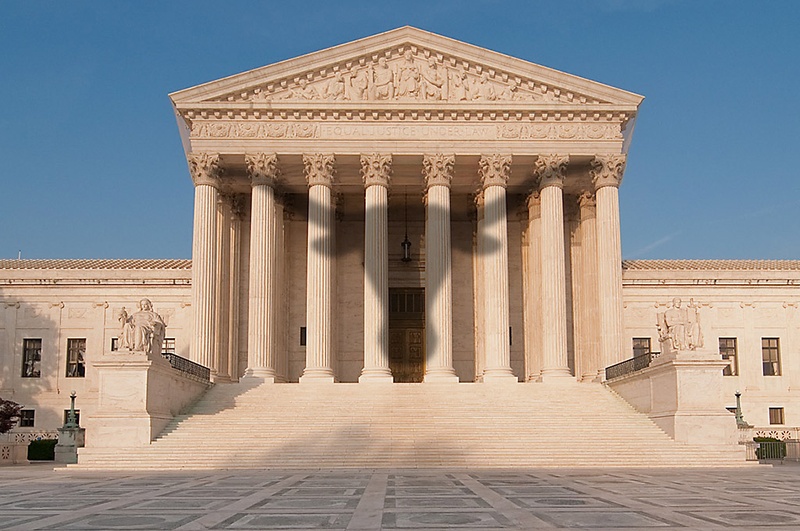Affirmative Action at UT and Beyond at Stake in Court Case

*Today’s big case at the Supreme Court is the Evenwel v Abbott suit, where the one-man, one-vote concept is at stake. Tomorrow won’t be any less important. The issue of affirmative action in college admissions will come to the fore when arguments are heard in the Fischer v University of Texas case. Interesting fact: the man who organized and bankrolled todays voting challenge is the same one who backs tomorrow’s affirmative action challenge, Edward Blum. VL
 By Matthew Watkins, The Texas Tribune
By Matthew Watkins, The Texas Tribune
Seven years have passed since Abigail Fisher, a white Sugar Land native, applied to the University of Texas at Austin. On Wednesday her lawyers will have one more chance to argue in court that she was unfairly rejected because of her race.
The U.S. Supreme Court is set to hear oral arguments in her case for the second time in three years. If she wins, Fisher would, at best, receive a $100 refund on her application. But a broad ruling in her favor could have major impact for millions of other students, potentially reshaping how they are admitted into college in Texas and beyond.
Those stakes have made the case one of the most highly anticipated of the court’s 2015-16 term. Some say it could bring an end to affirmative action in U.S. higher education. Groups ranging from civil rights leaders to Fortune 100 companies to members of the Texas Legislature have weighed in.
The question the justices are considering is this: Does UT-Austin’s use of racial preferences in undergraduate admissions violate the U.S. Constitution? In other words, does UT-Austin’s version of affirmative action discriminate against whites and Asians — the groups that, on average, have stronger academic credentials on paper?
UT-Austin’s admissions policies are unique, and have been a target of affirmative action opponents for years. The school uses a two-tiered process for deciding whom to accept. First, it looks at class rank. If a student graduates in the top 7 percent of a Texas public high school, she is automatically admitted, regardless of SAT scores or anything else. The idea is that drawing the top students from high schools with different racial makeups helps ensure diversity at UT-Austin.
That process is required by state law, and the automatically admitted students make up about three-fourths of each freshman class. The rest are admitted through what the university calls its “holistic review process,” which considers test scores, extracurriculars, race and more. Many universities across the country use something similar to that holistic review process.
Fisher, who attended — and has since graduated from — Louisiana State University, was denied through both processes at UT-Austin. Soon after, she sued, saying less qualified minority students were accepted in her place.
UT-Austin argues that her grades and test scores were so low that she wouldn’t have been admitted even if she were another race. But the merits of her particular application now appear to be beside the point. Justices seem to be using her case to review affirmative action as a whole.
Different options
Most experts believe the case will resolve in one of three ways:
- The court could uphold UT-Austin’s current admissions policies, and essentially preserve the current standards for affirmative action across the country.
- It could issue a broad ruling that would kill affirmative action nationwide, or dramatically change how it’s administered.
- Or the court could narrowly shoot down UT-Austin’s policies, while leaving other schools in other states able to continue considering race in their applications.
UT-Austin has argued that it needs to consider race to improve its educational environment. All students benefit from people of diverse backgrounds and races in the classroom, it has argued. And minority students can’t simply be token representatives; there should be enough minorities so that they feel comfortable on campus and speaking out in class.
In past rulings, the Supreme Court has generally accepted those reasons. The guideline has been that schools have to show a compelling need to use racial preferences. And there can’t be racial quotas.
“Affirmative action is designed to benefit all students,” said Sherrilyn Ifill, president of the NAACP Legal Defense Fund. “It is designed to ensure that the pipeline for opportunity and leadership remains open for all students, but also to ensure that the educational environment includes a range of experiences from across the state.”
But many thought the court, which has peeled back a key part of the Voting Rights Act andplaced limits on the consideration of race in hiring under Chief Justice John Roberts, would eliminate affirmative action altogether when it first heard the Fisher case in 2013. Instead, the court essentially punted, saying that universities can use affirmative action but must have good reasons. And they need to show that other adequate race-neutral alternatives don’t exist.
Fisher’s case was sent back to a lower appeals court, which ruled again in UT-Austin’s favor. The fact that the Supreme Court is taking up the case again suggests to many that UT-Austin’s system, if not affirmative action altogether, might be in trouble.
“This is a case in which it is really unlikely that the university will prevail,” said Richard O. Lempert, a distinguished law professor emeritus at the University of Michigan, speaking Monday at an event hosted by the Cato Institute in Washington.
The case could turn on the state law that requires state universities in Texas to admit top students from any public high school in the state. The law, known as the top 10 percent rule, is based on the idea that Texas’ high schools are segregated. Taking the top students from each school produces a diverse student body without the need for racial preferences, Fisher’s lawyers argue. (UT-Austin is partially exempt from the top 10 percent rule. It’s only required to take students from the top 7 percent, since it doesn’t have room for everyone in the top 10.)
But UT-Austin says it needs more than just racial diversity to be successful. It wants the ability to recruit minorities who may be star violinists, elite athletes and or have other extraordinary accomplishments. The top 10 percent rule alone doesn’t give that freedom, the university has said, and Fisher’s lawyers don’t recognize that.
“She has a dim view of success — and diversity,” the university said in its brief to the court.
Disclosure: The University of Texas at Austin is a corporate sponsor of The Texas Tribune. A complete list of Tribune donors and sponsors can be viewed here.
This article was originally published in The Texas Tribune.
[Photo courtesy of The Texas Tribune]

